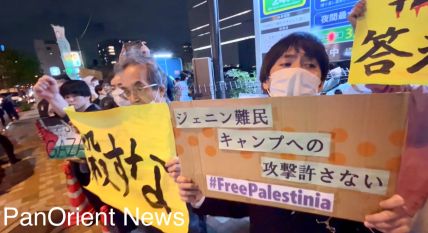|
|
Environment
Radioactive Fish Found in Eastern Japan, Ban is considered on Certain Shipments
Tuesday, April 5, 2011

Tokyo- (PanOrient News) The Japanese government is reportedly considering a ban on shipments of certain seafood products following the discovery of a radioactive iodine in fish caught off Kitaibaraki, Ibaraki Prefecture, south of Fukushima.
High levels of radioactive iodine have been found in young launce caught off Kitaibaraki, Ibaraki Prefecture, prompting the Health Ministry to advise that it not be consumed. Different young launce also caught near Kitaibaraki was also contaminated with 526 bequerels per kilogram of radioactive cesium, exceeding the legal limit of 500 bequerels, a local fishery cooperative told local media Tuesday.
The cooperative is reportedly planning to ban fishing of young launce in all of Ibaraki Prefecture.
Fisheries minister Michihiko Kano said later in the day that the government intends to toughen inspections of marine products in Ibaraki and increase the number of inspections off Choshi, Chiba Prefecture, in light of the continuing leaks of radioactive materials into the Pacific Ocean from the damaged Fukushima Daiichi nuclear power plant.
Tokyo Electric Power Company, or TEPCO, the operator of the plant, which has been struggling to halt the flow of highly radioactive water into the Pacific Ocean, reported earlier that 7.5 million times the legal limit of radioactive iodine 131 has been detected from samples of seawater near the plant. It said that the contaminated water was leaking from a cracked concrete pit near the No. 2 reactor. TEPCO said samples of water taken near the water intake of the No. 2 reactor contained 1.1 million times the legal limit of cesium 137, which has a half life of 30 years.
Chief Cabinet Secretary Yukio Edano said Japan has informed the relevant international authorities of the leaks of radioactive substances into the sea in accordance with the U.N. Convention on the Law of the Sea.
In related development, radiation measurements have exceeded levels at which people are advised to stay indoors in a town outside the 30-kilometer radius of the damaged Fukushima Daiichi nuclear plant, Jiji news agency reported. It said the science ministry detected 10.3 millisieverts of radiation at one location in Namie Town, some 30 kilometers northwest of the plant.
The amount is calculated on the assumption that a person has remained outdoors for 11 consecutive days through Sunday.
The finding is higher than the 10 millisieverts the government views as the criteria for remaining indoors.
The Nuclear and Industrial Safety Agency has been taking the position that the radiation level was only detected in a limited area, thus it has no intention of expanding the indoor advisory zone at present.
But various independent organizations have been calling on the Japanese government to "disclose more information" and "to expand the evacuation zone" around Fukushima plants.
Photo: A dish of launce fish. Courtesy of Atsumiya Inc.
PanOrient News
© PanOrient News All Rights Reserved.
|
|

